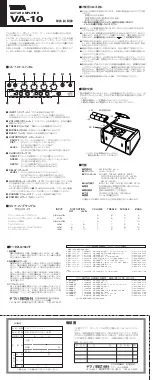
All material © 2010 Martin Audio Ltd. Subject to change without notice
27
Peaking/Bandpass/Bandstop/Allpass
Lowpass/Highpass EQ
Shelving
3.10.3.3
Low-pass and high-pass filters
This menu sets up the crossover filters. There are 2 available filters, one low-pass (LP) filter and one high-
pass (HP) filter. By using both, you will obtain a band-pass response. Both traditional IIR and brick-wall linear
phase FIR filters are implemented.
The classic IIR crossover filters can be selected as a Butterworth, Bessel or Linkwitz-Riley shape.
In the first two cases, the
Freq.
parameter defines the –3 dB point, in the latter, the –6 dB point. The slope is
freely selectable from 6dB/octave (1st order filter) to 48dB/octave (8th order filter).
The FIR filters can be selected as normal (FIR) or enhanced (FIR+). The enhanced version gives a higher
out-of-band rejection, at the expense of a little (<10 degrees) phase nonlinearity. In both cases, the minimum
working frequency is related to the desired latency.
A 400Hz minimum working frequency gives a latency of 2ms. It is better, therefore, to use the FIR filters for
upper midranges or mid-high crossovers for which the phase coherency is a key point.
The use of the FIR filters causes the deactivation of the limiter look-ahead feature, in order to preserve the
overall 2.0 ms latency.
3.10.3.4
Polarity
This menu allows the user to reverse the signal polarity.
3.10.3.5
Channel delay
This menu allows two different transducers to be time aligned. The selectable delay varies from 0 to 30 ms in
10.4us steps.














































